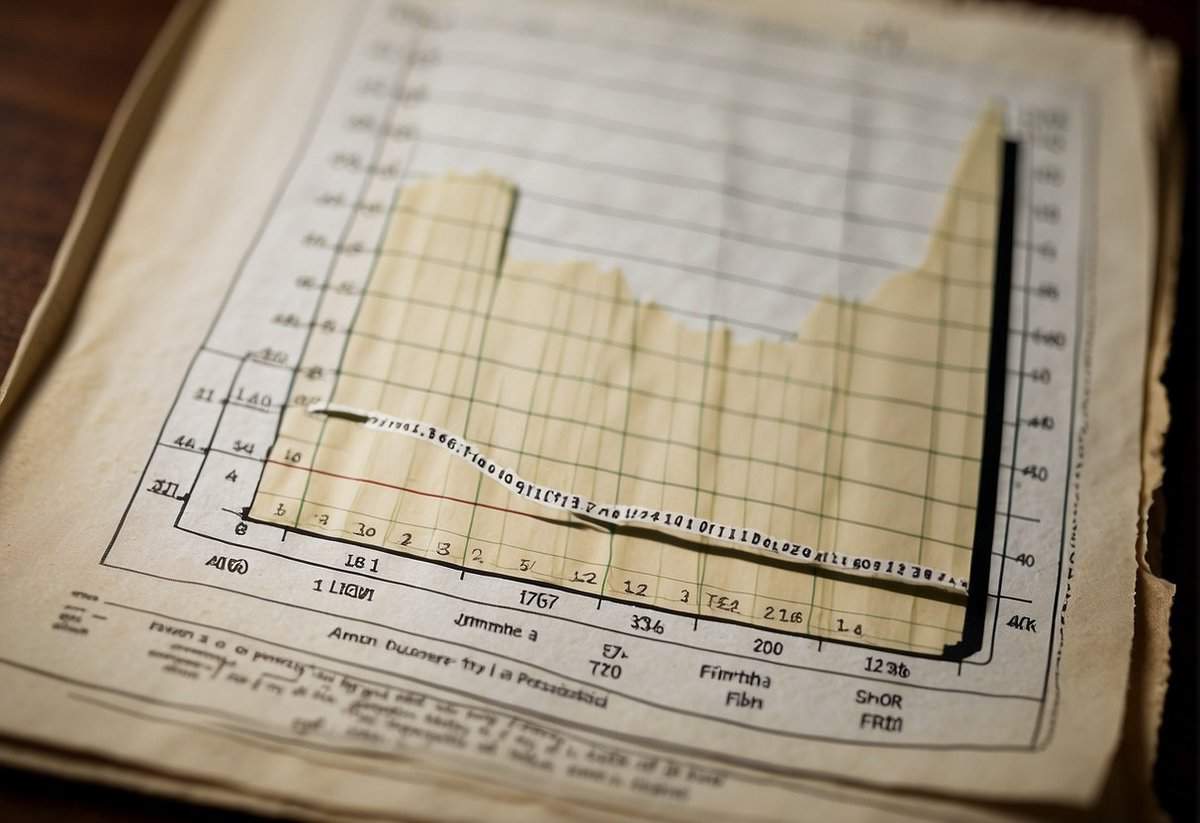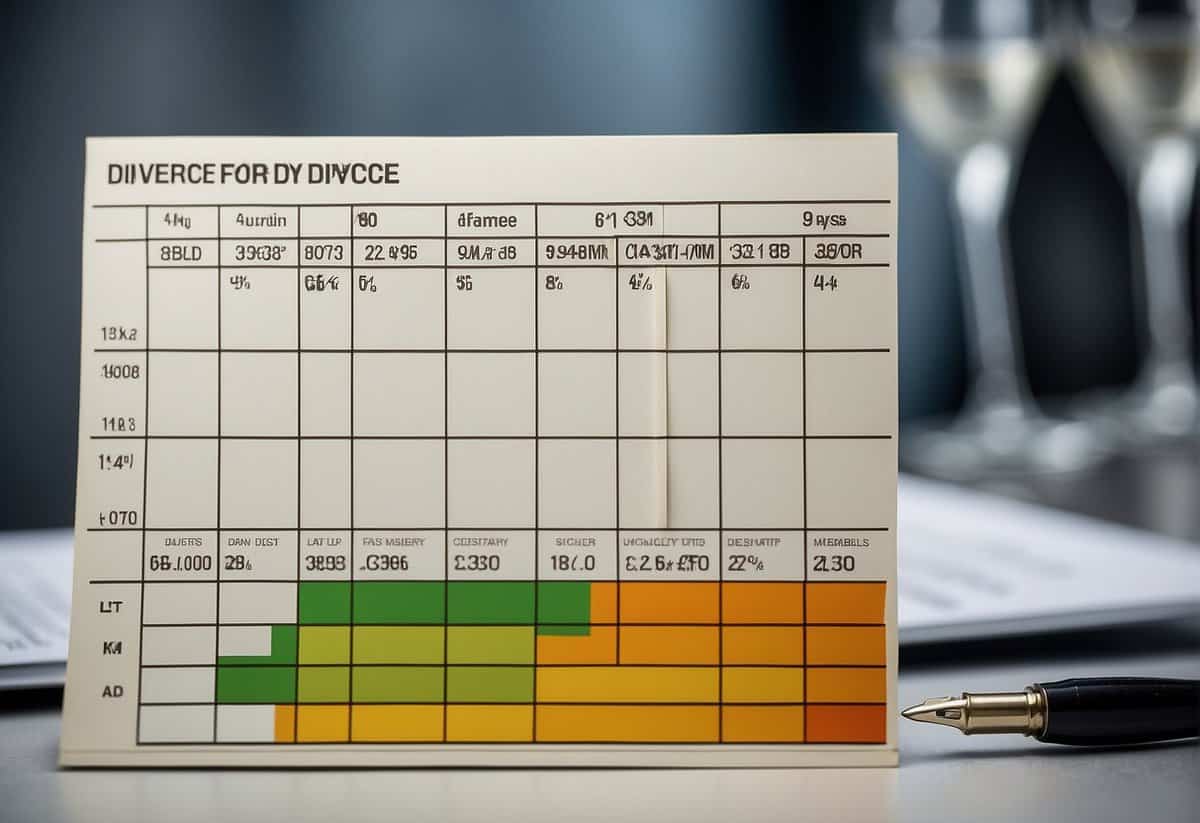What Is the Divorce Rate for Wedding Dates? Unveiling Marital Statistics
When assessing the stability of marriages, one frequently explored question is how the divorce rate varies depending on the wedding date. While this might seem like a superstitious consideration to some, there’s growing interest in whether certain dates or times of year are more auspicious for long-lasting unions. Historically, divorce rates have been used to gauge the health of relationships across demographics and over time, with the understanding that fluctuations can reveal underlying social and economic trends.

In the conversation about marital longevity, factors such as age, education, and wealth often come into play. It’s well-documented that these elements, among others, can significantly impact the likelihood of a marriage enduring. Clear, accessible data is essential for anyone curious about the divorce rate connected to wedding dates, as it allows for informed decisions and a deeper understanding of the patterns that contribute to marital success or dissolution.
Key Takeaways
- The likelihood of divorce can vary with different wedding dates.
- Economic, educational, and demographic factors are crucial in marital longevity.
- Accessible data on divorce rates by wedding dates provides valuable insights.
Historical Divorce Rate Trends

When exploring the history of divorce rates, you’ll notice discernible patterns shaped by various societal factors. Let’s take a closer look at how these rates have changed over time and the societal shifts that influenced these trends.
Divorce Rates Over Time
Historically, the divorce rate has seen significant changes. In the earlier decades, divorces were much less common, but the rates began to climb from the 1960s, reaching a peak in the 1980s. However, recent years, specifically since 2000, have marked a downward trend in divorce rates. For example, in 2022, the number of divorces continued to decline.
The Centers for Disease Control and Prevention has kept a record of these shifts, noting that the provisional number of divorces and annulling the marriage rate in the United States has notably decreased. According to their data, from 2000-2022 there is a visible downward slope in the frequency of divorces per capita.
Impact of Societal Changes
Societal changes have greatly impacted the rate of divorce. Major events, like the pandemic, introduced unique stressors into relationships but also resulted in unexpected outcomes affecting marriage and divorce. The onset of lockdowns appeared to force couples to spend more time together, which, surprisingly for some, may have strengthened relationships rather than strained them.
Our World in Data discusses how divorce trends shifted with societal attitudes, noting that as marriages became less of a social requirement, and more about personal fulfillment, the rates fluctuated. In the United States, various laws and societal norms have also evolved, further affecting divorce statistics.
The transformation in the workplace, gender roles, and the concept of marriage itself have all contributed to these trends. It’s been observed that as women became more financially independent and societal norms around staying in an unhappy marriage loosened, the option to divorce became more viable for those in less satisfying marriages.
Demographic Factors Influencing Divorce

When considering the divorce rate, your wedding date might seem like a trivial detail, but various demographic factors such as your age at marriage and education level significantly influence the likelihood of divorce. Let’s examine how these factors are at play.
Age and Divorce
Age at marriage is strongly correlated with the probability of divorce. Generally, the younger you are when you get married, the higher your chance of divorce. Research has indicated that couples marrying in their teens and early twenties face a higher risk compared to those who wait until they are older. The median age for marriage has risen over the years as people choose to marry later in life, potentially contributing to a decline in divorce rates.
- Median Age at First Marriage (2024 Estimates):
- Men: Around 30 years
- Women: Late 20s
Marriage and Divorce Among Different Demographics
Your race, sex, sexual orientation, and level of education can influence your marriage’s durability. Studies have found that same-sex couples may experience different stressors that affect their relationships differently compared to heterosexual couples. Social support is a crucial factor for all couples, with those experiencing higher social support having generally more resilient marriages.
Key Factors:
- Race/Ethnicity: Cultural traditions and societal attitudes can impact marriage longevity.
- Education: Higher educational attainment is usually linked to lower divorce rates.
- Sexual Orientation: Legal recognition and societal acceptance can play roles in the stability of same-sex marriages.
Understanding these factors can give you insight into the complex landscape of marital stability and divorce.
Financial Considerations and Marital Stability

When you tie the knot, your financial landscape becomes intrinsically linked with marital stability. Understanding the interplay between economics, child-related expenditures, and how these factors contribute to divorce rates is crucial for maintaining a healthy marriage.
Economic Factors and Divorce Rates
Financial strains are frequently cited as a leading cause of marital discord. In particular, the average cost of a divorce stands at around $15,000 per person and can escalate beyond $100,000 when complications arise, like custody disputes.
- Earnings and Employment: A stable income acts as a cushion during financial downturns. Conversely, unemployment or unstable earnings can increase the strain on your marital relationship.
- Debt and Credit: How you manage debt – from credit cards to student loans – can either strengthen or weaken the foundation of your marriage.
Children and Finances
The arrival and upbringing of children add a significant layer of financial responsibility, which can influence the stability of a marriage.
- Child Care Costs: You must plan for ongoing expenses such as child care, which can considerably add to the family budget.
- Child Support: Should a divorce occur, obligations like child support become a critical financial consideration. It ensures the continued welfare of your children but also represents a recurring expense impacting your finances.
Managing your finances effectively and being mindful of the costs associated with children can help in creating a more stable marital environment.
Sources and Data Visualization

When you’re exploring the topic of divorce rates in relation to wedding dates, it’s essential to know that the most reliable data comes from authoritative sources such as government surveys and comprehensive statistics. These resources provide a wealth of information, often presented in a format that allows for easy digestion and analysis.
Government Surveys and Statistics
The U.S. Census Bureau and the National Center for Health Statistics are primary sources for official data on marriage and divorce. For instance, the American Community Survey collects detailed demographic data annually, which includes marriage and divorce statistics. By accessing reports from Census.gov, you can find a series of visualizations and data tools that reflect changes and trends in family composition, including how wedding dates might correlate with divorce rates.
Interactive Data Experiences
Apart from static data, the Census Bureau offers interactive data experiences. These tools can help you customize and visualize statistics from multiple censuses, surveys, and programs. This immersive approach to data allows you to interact with the information in real-time, creating custom reports and maps that give context to the raw numbers and potentially reveal insights about how wedding dates might affect the likelihood of divorce.
Frequently Asked Questions

In exploring marital trends, it’s natural to wonder about the success rates of marriages and what factors might influence their longevity. Below, your most pressing inquiries are addressed, offering insight into the fascinating dynamics of marital unions.
How often do couples that get married on a particular day divorce?
The divorce rate does not universally track with the wedding date itself; instead, it’s influenced by a variety of factors. However, some studies suggest that couples who marry on special dates like Valentine’s Day might be more prone to divorce.
What are the leading reasons behind marital separations?
Common reasons cited for marital separations include lack of commitment, infidelity, and conflict/arguing. Each couple’s situation is unique, with varying underlying issues leading to the decision to divorce.
Which demographic experiences the highest rate of marriage dissolution?
Typically, younger couples tend to experience higher rates of marriage dissolution. Age at marriage plays a significant role, as those who marry younger often face higher divorce rates.
During which year of matrimony is a couple most likely to split up?
Data shows that the risk of divorce is particularly high during the early years of marriage, with the first five years being the most critical and the likelihood of separation peaking around years seven and eight.
Are certain days of the week more associated with higher divorce rates after marriage?
There is no clear evidence linking a specific day of the week to higher divorce rates post-marriage. The decision to divorce is typically based on personal, interpersonal, and external factors rather than the day of the week a couple is married.
Does the season in which a couple gets married affect their likelihood of divorcing?
While there’s no concrete evidence linking marriage season to divorce likelihood, certain seasonal trends in marriages exist, such as a higher number of weddings in the summer months. However, these trends do not directly correlate to an increased risk of divorce.

